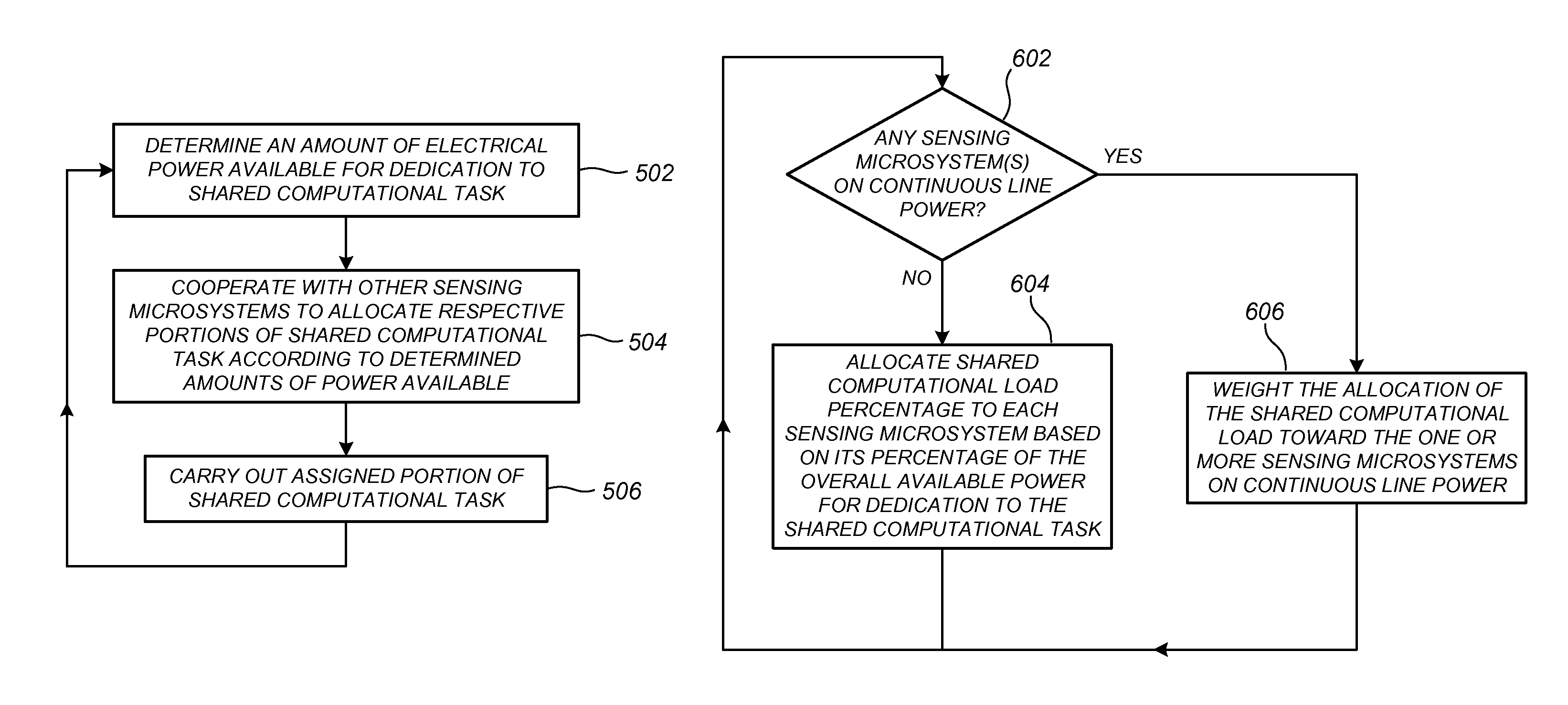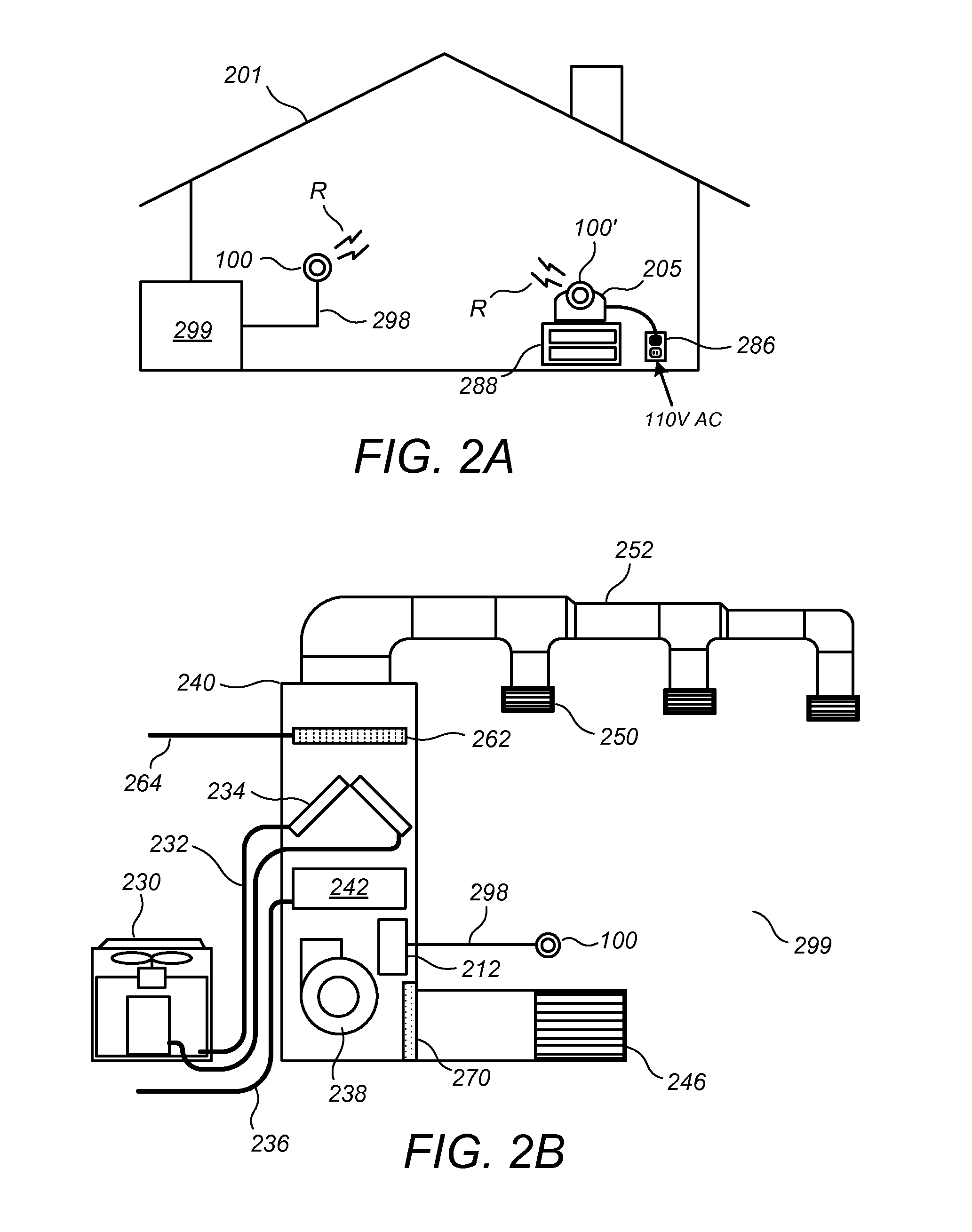Computational load distribution in a climate control system having plural sensing microsystems
a climate control system and microsystem technology, applied in the field of system monitoring and control, can solve the problems of a relatively high computational load and a relative high computational complexity, and achieve the effects of increasing efficiency, reducing computational complexity, and reducing computational complexity
- Summary
- Abstract
- Description
- Claims
- Application Information
AI Technical Summary
Benefits of technology
Problems solved by technology
Method used
Image
Examples
Embodiment Construction
[0014]One or more of the embodiments described herein is particularly advantageous for use with climate control systems having plural wirelessly communicating sensing microsystems, such as those described in one or more of the commonly assigned incorporated applications, supra. More particularly, one or more of the embodiments described herein is particularly advantageous in the practical implementation of an easy-to-install, easy-to-administer, flexible, and scalable network of smart, visually appealing, “lightweight” sensing and control nodes, referenced herein as sensing microsystems, that cooperate to govern the operation of one or more HVAC systems in a manner that promotes an optimal balance of human comfort and energy efficiency for an enclosure, such as a residential or business building enclosure. By “lightweight,” it is meant that that the sensing microsystems are relatively compact and low-powered devices, comparable in size to handheld devices such as smartphones, and co...
PUM
| Property | Measurement | Unit |
|---|---|---|
| diameter | aaaaa | aaaaa |
| electrical power | aaaaa | aaaaa |
| electrical energy | aaaaa | aaaaa |
Abstract
Description
Claims
Application Information
 Login to View More
Login to View More - R&D
- Intellectual Property
- Life Sciences
- Materials
- Tech Scout
- Unparalleled Data Quality
- Higher Quality Content
- 60% Fewer Hallucinations
Browse by: Latest US Patents, China's latest patents, Technical Efficacy Thesaurus, Application Domain, Technology Topic, Popular Technical Reports.
© 2025 PatSnap. All rights reserved.Legal|Privacy policy|Modern Slavery Act Transparency Statement|Sitemap|About US| Contact US: help@patsnap.com



